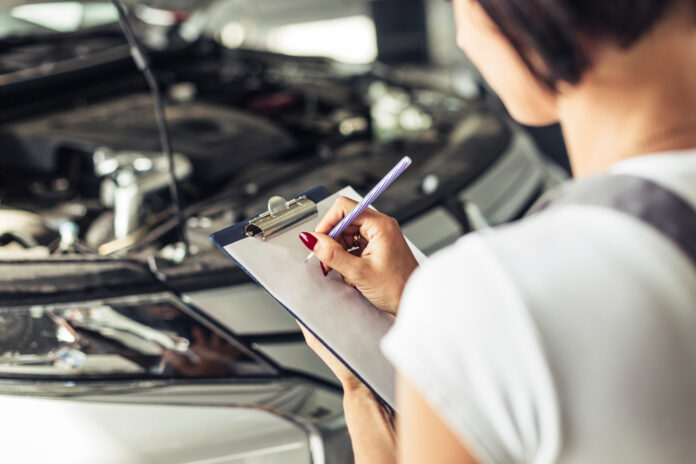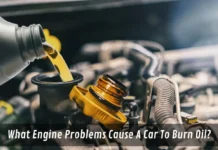Car accidents are stressful, no matter how big or small they are. Your heart races, your mind spins, and all you want is to get back to normal. But before you hit the road again, there’s one thing you can’t skip: making sure your car is safe and sound. Even a tiny fender bender can hide bigger problems under the hood or under the bumper! That’s why today, we’re diving into the 6 essential inspections and repairs after a car accident. Whether you’re a first-time driver or a road warrior, this guide will help you know what to check, why it matters, and how to fix it right.
1. Check the Frame and Structural Integrity

Your car’s frame is like its backbone. It holds everything together and keeps you safe. Even a small crash can bend or crack it, and if it’s damaged, your car might not protect you in another accident. Worse, a weak frame can mess up how your car drives like pulling to one side or wearing out tires fast.
Inspection Tips:
- Look for visible damage: Walk around your car and check for dents, bends, or cracks in the metal. Pay extra attention to the front, back, and sides where impacts usually hit.
- Listen for clues: If your car creaks or groans when you turn corners, that’s a red flag.
- Get a pro involved: Mechanics use special tools like frame alignment machines to spot tiny twists you can’t see with your eyes.
Repair Process:
If the frame’s bent, a body shop can straighten it using a hydraulic frame machine. For serious cracks, they might replace sections of the frame. Fun fact: some shops use lasers to measure frame alignment down to the millimeter pretty cool, right? After repairs, they’ll test-drive it to make sure it feels like new.
Unique Tip:
Try this at home: park on a flat surface, step back, and see if your car looks lopsided. If it leans even a little, the frame might be off. It’s not a perfect test, but it’s a quick way to spot trouble before the mechanic does!
2. Inspect the Suspension and Alignment
Your suspension is what keeps your ride smooth and your tires gripping the road. After an accident, shocks, struts, or tie rod can get knocked out of whack. Misalignment makes steering shaky and wears tires unevenly think bald spots on one side!
Inspection Tips
- Feel the drive: Does your steering wheel vibrate or pull to one side? That’s a sign something’s off.
- Check the tires: Look for uneven wear patterns like one edge more worn than the rest.
- Bounce test: Push down hard on each corner of your car. If it keeps bouncing more than twice, your shocks might be toast.
Repair Process
A mechanic will lift your car and check every suspension part springs, shocks, control arms, you name it. They’ll fix or replace what’s broken, then use a fancy alignment machine to set your wheels straight. It’s like giving your car a chiropractic adjustment!
Unique Tip
Here’s a quirky trick: roll a coin across your driveway and watch how your car reacts when you steer over it. If it feels like a rollercoaster, your suspension’s crying for help. It’s not scientific, but it’s a fun way to notice wobbles!
3. Examine the Engine and Mechanical Systems

A crash can rattle more than your nerves it can shake up your engine too. Hoses might leak, belts might snap, or the radiator could crack. If these go unchecked, you’re looking at a breakdown (or a hefty tow bill) down the road.
Inspection Tips
- Pop the hood: Look for oil, coolant, or brake fluid leaks. Even a small drip is bad news.
- Start it up: Listen for weird noises like grinding or knocking. Smell for burning odors too.
- Check warning lights: If your check engine light blinks, don’t ignore it get it scanned at an auto shop.
Repair Process
Mechanics will test the engine’s compression, replace damaged belts or hoses, and fix leaks. If the radiator’s busted, they’ll swap it out. Pro tip: ask for a coolant flush after repairs to keep things running cool and clean.
Unique Tip
Try the “sniff test” after driving: park, wait five minutes, then smell near the hood. A sweet scent might mean coolant’s leaking, while a burnt smell could signal oil trouble. It’s like being a car detective!
4. Assess the Brakes
Brakes are your car’s lifeline. A crash can damage brake lines, rotors, or pads, making it harder to stop. You don’t want to find out they’re failing when you’re zooming toward a red light!
Inspection Tips
- Test the pedal: Does it feel spongy or sink to the floor? That’s a sign of air or fluid loss.
- Listen up: Squealing or grinding when you brake means trouble.
- Look underneath: If you see brake fluid pooling under your car (it’s usually clear or yellowish), you’ve got a leak.
Repair Process
A mechanic will bleed the brake lines to remove air, replace worn pads or rotors, and fix any leaks. They’ll test the pressure to make sure stopping power is back to 100%. It’s a quick fix that saves lives.
Unique Tip
Next time you brake gently, count how long it takes to stop from 10 mph. If it feels longer than usual (say, more than 2-3 seconds), get it checked. It’s a simple way to feel the difference!
5. Evaluate the Electrical System

Modern cars are packed with wires and gizmos lights, airbags, sensors, you name it. An accident can fry circuits or knock sensors loose, leaving you with dead headlights or a airbag that won’t deploy when you need it.
Inspection Tips
- Test everything: Turn on headlights, wipers, and the radio. Flick the turn signals too. Anything dim or dead?
- Watch the dashboard: If airbag or ABS lights stay on, it’s not just annoying it’s a warning.
- Check the battery: Look for loose cables or cracks in the battery case.
Repair Process
Electricians (or mechanics with the right tools) will trace wiring issues with a multimeter, replace blown fuses, and reset sensors. Airbag fixes might need a specialist since they’re tricky (and explosive!). A full diagnostic scan ties it all together.
Unique Tip
Here’s a fun one: tap your horn lightly after a crash. If it’s weak or silent, the electrical system might’ve taken a hit. It’s a small clue with big meaning!
6. Inspect the Body and Paint
Dents and scratches aren’t just ugly they can hide rust or weaken your car’s shell. Plus, a banged-up bumper might not absorb impact like it should in another crash. Fixing the body keeps your car safe and looking sharp.
Inspection Tips
- Feel the surface: Run your hand over dents to check for sharp edges or hidden cracks.
- Look for gaps: Are doors or the hood misaligned? That’s a sign of bigger issues.
- Check the glass: Cracked windshields or windows need attention fast.
Repair Process
Body shops will hammer out dents, weld cracks, and repaint to match. For big damage, they might replace panels entirely. Windshields get swapped with special adhesive to stay secure. A good shop will even buff out tiny scratches for free!
Unique Tip
Snap a pic of your car in sunlight glare can reveal paint mismatches or dents you missed. It’s like giving your car a selfie checkup!
Conclusion
Getting into a car accident stinks, but taking care of these 6 essential inspections and repairs can turn a bad day into a fresh start. From the frame to the paint, every part matters. Don’t skip the pros mechanics and body shops have the tools and know-how to spot what you can’t. Drive safe, check often, and keep your ride rolling strong!








